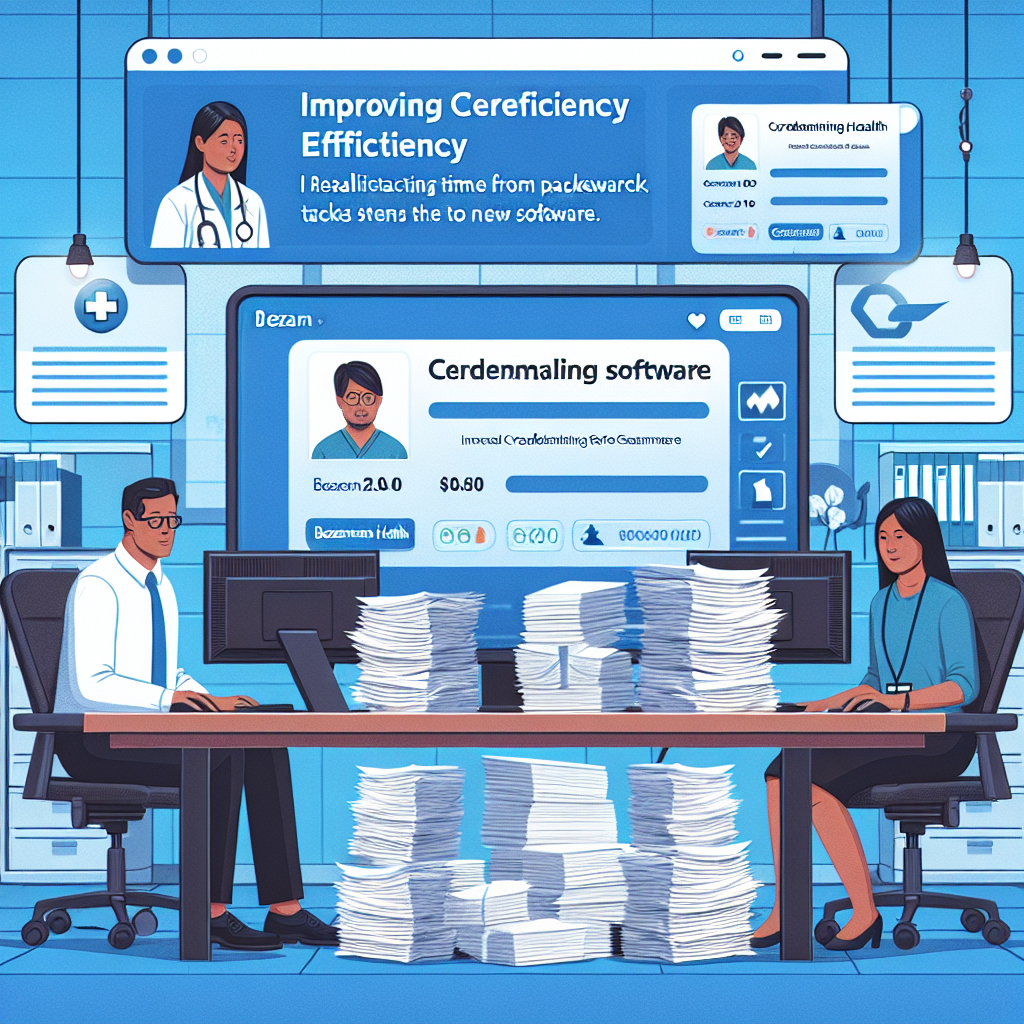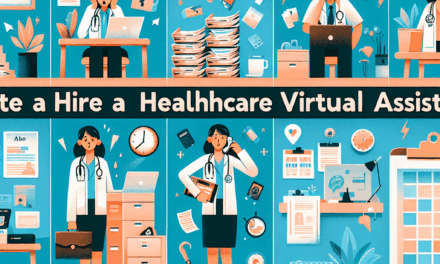Bozeman Health Boosts Efficiency with Credentialing Software, Reallocates 2 FTEs

In the rapidly evolving landscape of healthcare, efficiency and accuracy are paramount. Bozeman Health, a leading healthcare provider, has recently made headlines by significantly enhancing its operational efficiency through the implementation of advanced credentialing software. This strategic move has not only streamlined their processes but also allowed the reallocation of two full-time equivalents (FTEs) to more critical areas within the organization. This article delves into the intricacies of this transformation, exploring the benefits, challenges, and broader implications for the healthcare industry.
The Role of Credentialing in Healthcare
Credentialing is a critical process in the healthcare sector, ensuring that medical professionals meet the necessary qualifications and standards to provide care. This process involves verifying the education, training, and professional experience of healthcare providers, as well as their licensure and certifications. The importance of credentialing cannot be overstated, as it directly impacts patient safety and the quality of care delivered.
Traditionally, credentialing has been a labor-intensive and time-consuming process, often involving extensive paperwork and manual verification. This not only increases the risk of errors but also diverts valuable resources away from patient care. In recent years, however, technological advancements have paved the way for more efficient solutions.
Bozeman Health recognized the need to modernize its credentialing process to keep pace with the growing demands of the healthcare industry. By adopting cutting-edge credentialing software, they have been able to automate many of the manual tasks involved, significantly reducing the time and effort required.
- Verification of qualifications and licenses
- Monitoring of ongoing compliance with industry standards
- Streamlining of re-credentialing processes
The implementation of credentialing software has not only improved efficiency but also enhanced the accuracy and reliability of the credentialing process. This has had a direct impact on patient safety, as it ensures that only qualified and competent professionals are allowed to provide care.
Implementation of Credentialing Software at Bozeman Health
The decision to implement credentialing software at Bozeman Health was driven by a desire to improve operational efficiency and reduce administrative burdens. The process began with a thorough evaluation of the available software solutions, taking into consideration factors such as functionality, ease of use, and cost-effectiveness.
After careful consideration, Bozeman Health selected a software solution that offered a comprehensive suite of features designed to streamline the credentialing process. This included automated verification of credentials, real-time tracking of compliance, and integration with existing systems to ensure seamless data flow.
The implementation process was meticulously planned and executed, with a focus on minimizing disruption to ongoing operations. This involved extensive training for staff members to ensure they were comfortable with the new system and could utilize its features effectively.
One of the key challenges faced during the implementation was the integration of the new software with existing systems. This required close collaboration between the software provider and Bozeman Health’s IT team to ensure compatibility and data integrity.
Despite these challenges, the implementation was completed successfully, and the benefits were quickly realized. The automation of manual tasks freed up valuable time for staff members, allowing them to focus on more critical areas of patient care.
Reallocation of FTEs: A Strategic Move
One of the most significant outcomes of the implementation of credentialing software at Bozeman Health was the reallocation of two full-time equivalents (FTEs). This strategic move was made possible by the increased efficiency and automation provided by the software, which reduced the need for manual intervention in the credentialing process.
The reallocation of FTEs allowed Bozeman Health to redirect resources to areas that directly impact patient care and organizational growth. This included roles focused on patient engagement, quality improvement, and strategic planning.
By reallocating FTEs, Bozeman Health was able to enhance its focus on patient-centered care, ensuring that resources were directed towards initiatives that improve patient outcomes and satisfaction. This strategic move also allowed the organization to better align its workforce with its long-term goals and objectives.
The reallocation of FTEs is a testament to the transformative impact of technology in healthcare. By leveraging advanced software solutions, healthcare organizations can optimize their operations and allocate resources more effectively, ultimately leading to improved patient care and organizational success.
Challenges and Considerations in Implementing Credentialing Software
While the benefits of implementing credentialing software are clear, the process is not without its challenges. Healthcare organizations must carefully consider a range of factors to ensure a successful implementation and maximize the return on investment.
One of the primary challenges is the integration of the new software with existing systems. This requires careful planning and coordination to ensure compatibility and data integrity. Organizations must also consider the potential impact on staff members, who may need to adapt to new workflows and processes.
Another consideration is the cost of implementation. While credentialing software can lead to significant cost savings in the long run, the initial investment can be substantial. Organizations must carefully evaluate the potential return on investment and consider the long-term benefits of increased efficiency and accuracy.
Data security is another critical consideration. Healthcare organizations must ensure that the software solution they choose complies with industry standards and regulations to protect sensitive patient information.
Despite these challenges, the benefits of implementing credentialing software far outweigh the potential drawbacks. By carefully planning and executing the implementation process, healthcare organizations can achieve significant improvements in efficiency, accuracy, and patient care.
The Broader Implications for the Healthcare Industry
The successful implementation of credentialing software at Bozeman Health has broader implications for the healthcare industry as a whole. As more organizations recognize the benefits of technology-driven solutions, the adoption of credentialing software is likely to become more widespread.
This trend is driven by the increasing demand for efficiency and accuracy in healthcare, as well as the need to reduce administrative burdens and focus on patient care. By automating manual tasks and streamlining processes, credentialing software can help healthcare organizations achieve these goals.
The adoption of credentialing software also has implications for workforce management. By reallocating resources to more critical areas, healthcare organizations can better align their workforce with their strategic goals and objectives. This can lead to improved patient outcomes, increased satisfaction, and organizational success.
As the healthcare industry continues to evolve, the adoption of technology-driven solutions will play a critical role in shaping the future of healthcare delivery. By embracing these solutions, organizations can enhance their operational efficiency, improve patient care, and achieve long-term success.
Conclusion
The implementation of credentialing software at Bozeman Health is a prime example of how technology can transform healthcare operations. By streamlining the credentialing process and reallocating resources to more critical areas, Bozeman Health has achieved significant improvements in efficiency and patient care.
This strategic move has broader implications for the healthcare industry, highlighting the potential benefits of technology-driven solutions in improving operational efficiency and patient outcomes. As more organizations recognize the value of these solutions, the adoption of credentialing software is likely to become more widespread, shaping the future of healthcare delivery.
In conclusion, the successful implementation of credentialing software at Bozeman Health serves as a model for other healthcare organizations looking to enhance their operations and achieve long-term success. By embracing technology and optimizing their processes, healthcare organizations can improve patient care, increase efficiency, and achieve their strategic goals.





